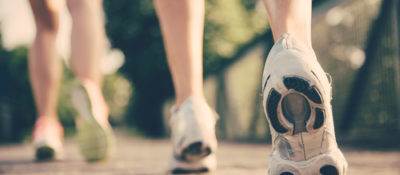Every year new concepts evolve the way physiotherapy is understood and practiced. Many of these terms remain closer to jargon, yet some have the power to innovate the practice, thus having a positive effect on how people heal from injury.
‘Patient-centered care’ is one idea that shifts how physio, and the health sector in general, are practiced. As many of you have experienced, the patient-practitioner relationship is at the core of any effective physio practice. Traditionally the practitioner is responsible for analyzing the patient’s problems and providing the best methods to heal the injury. This approach recognizes the practitioner as an expert but does not account for the patient as a unique entity, with a history, certain lifestyle and many physical challenges and possibilities. The innovative concept of patient-centered care reconfigures this relationship to caring for patients (and their families) in ways that are meaningful and valuable to the individual.
“Every patient who comes through our door enters with their own unique set of circumstances. It is important to us that we understand their situation in order to provide a meaningful intervention.” Helen Ries, Sitka Owner / Physiotherapist
There is no official standard for what constitutes this type of care, but it often involves two-way communication on the specificities of the client’s situation and preferences, education, and involvement of broader social supports. Click here for a more in-depth definition of patient centered care.
Observations from the Field
Though definitions and protocols assist in clarifying a term, the best way to illustrate the power of patient-centered care is to explore how it is played out in the clinic.
Nick is a professional drummer who came to Sitka in October 2015 with a complaint of neck and shoulder tension, the result of repetitive strain and non-optimal posture from being a musician. As with other more conventional symptom-focused treatments he had previously experienced, Nick was expecting to strictly look at the problem with his neck and shoulder.
At Sitka, a holistic understanding of the body and movement took a more in-depth analysis, examining how past physical experience and trauma were contributing to these injuries. Nick had a specific past medical history, which largely contributed to his neck and shoulder tension. He was involved in two motor vehicle accidents at ages 9 and 10. In the first accident, he was knocked off his bike and landed hard on his tailbone. The second accident was also while riding his bike. It included a major trauma to his abdominal wall, which was impaled by his bike. He subsequently had extensive abdominal wall surgery. Both the tailbone impact of the first accident and the abdominal wall impact created a significant restriction in the capacity for movement. This subsequently contributed to his tendency towards a forward head posture, with additional strain coming from his repetitive work position in drumming. By creating a relationship based on patient-centered care a sharing of information and experience was facilitated to explore the roots of the injury, while also creating a treatment plan that was relevant to Nick’s life. Collaborating on the treatment provided Nick with the necessary tools and understanding to ensure that he carried this knowledge into his daily life.
Nick is not the only one in his social circle to go to Sitka for treatment; his mother, brother, close friend and girlfriend all attend the clinic as well. With a greater understanding of not just his condition, but his family system as well, we have been able to reach deeper, and find connections for how they can co-support each other based on knowledge and understandings of specific physical challenges.
“Myself, my mother, my brother, my girlfriend, and one of my close friends all go to see Helen. We all have the same gear for exercises and release work and frequently talk about the different/individual things she has prescribed to us. We also support each other by reminding each other when things get tight to do the release work exercises and it helps. It’s like having a cheering squad”. Nick James, Sitka Client
A Ripple Effect
In the case of Nick, one of the unexpected outcomes from this healing process is how the empowerment and knowledge sharing has rippled out and been integrated into the way he provides drumming instruction to his clients. Through a patient-centered relationship at Sitka, he was able to cultivate a deeper understanding of the importance of symmetry in movement and realize movement as not isolated gestures but as full body engagement.
As Nick stated, “Since going to Sitka I’ve gotten a much better understanding of what my body should be doing to work as a unit, with all the muscles working together. This has also given me a much better awareness of how my body is doing playing a physical instrument like the drum set and allows me to check in more often and know what to do when my muscles get tired and or overworked. I’ve also been able to get my students to be aware of these things as beginners instead of running into problems later. (Helen) has inspired me by her continuing education. She’s always excited to talk about new things she’s learned to try and better help her clients. It has reminded me to be a student and continue learning, and again I try and pass this on to my students”.
Had his treatment been a more traditional interaction there may not have been the opportunity to cultivate a relationship allowing for a transfer of knowledge and skills. At the same time, Nick may not have been as empowered to share this knowledge on better movement practices with his clients.
Patient-centered care has the potential to not only positively alter the healing process for those suffering injuries; it can start to empower all of us to move well, feel well, and thus be well.
Not only interested in physio but also looking to learn the drums? Contact Nick James at: nickjamesdrummer@gmail.com



